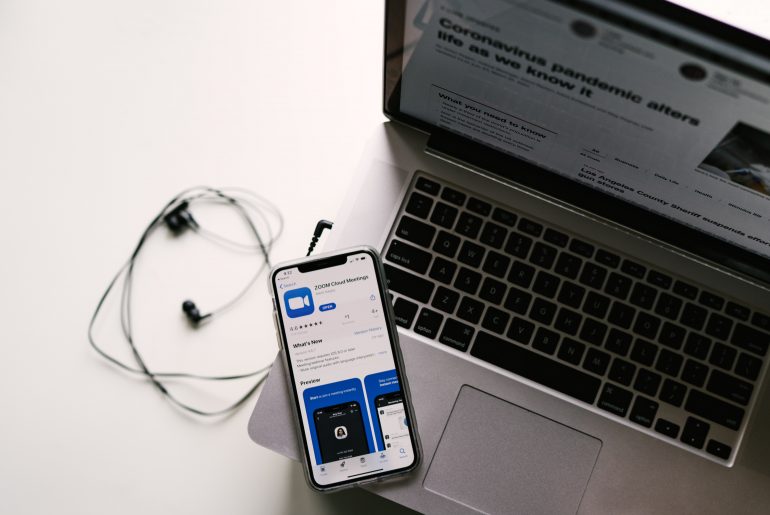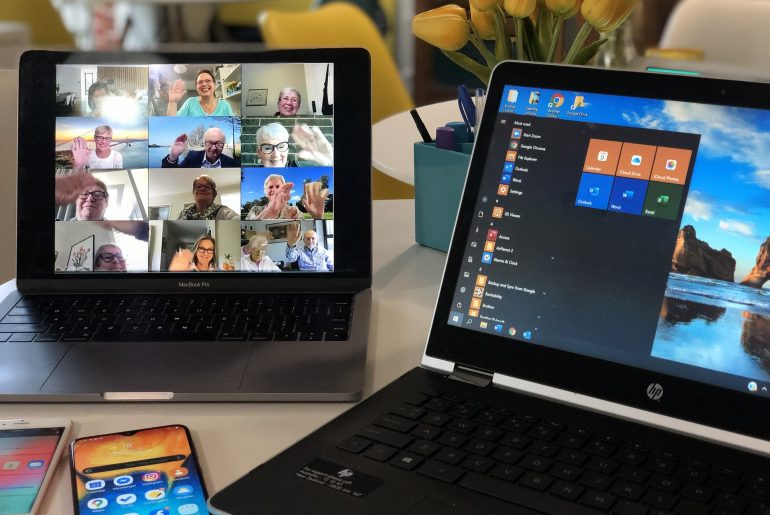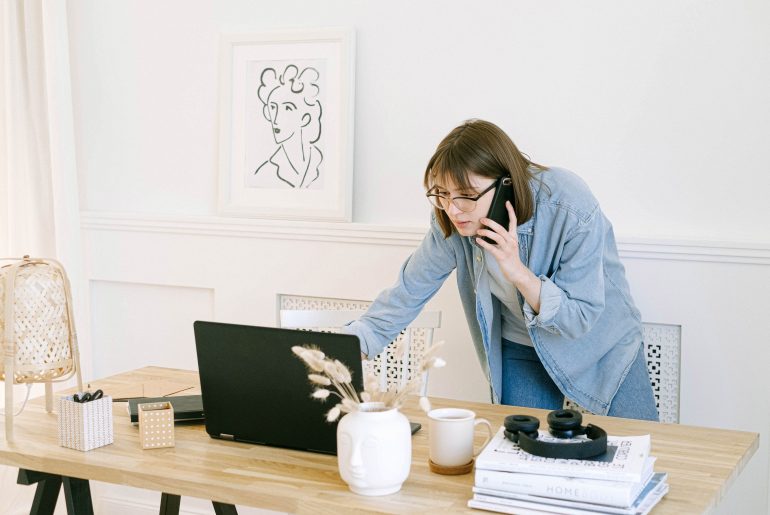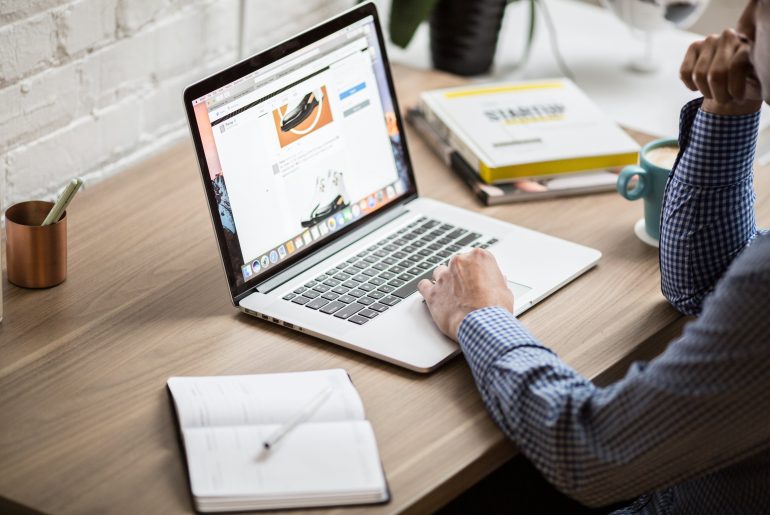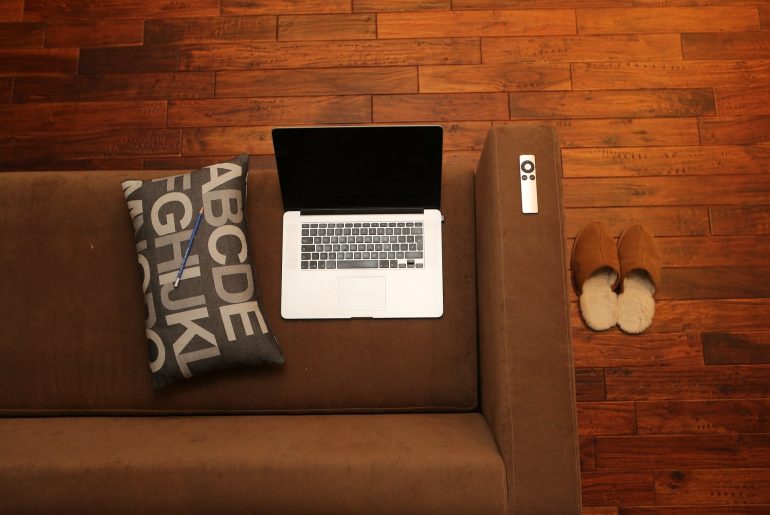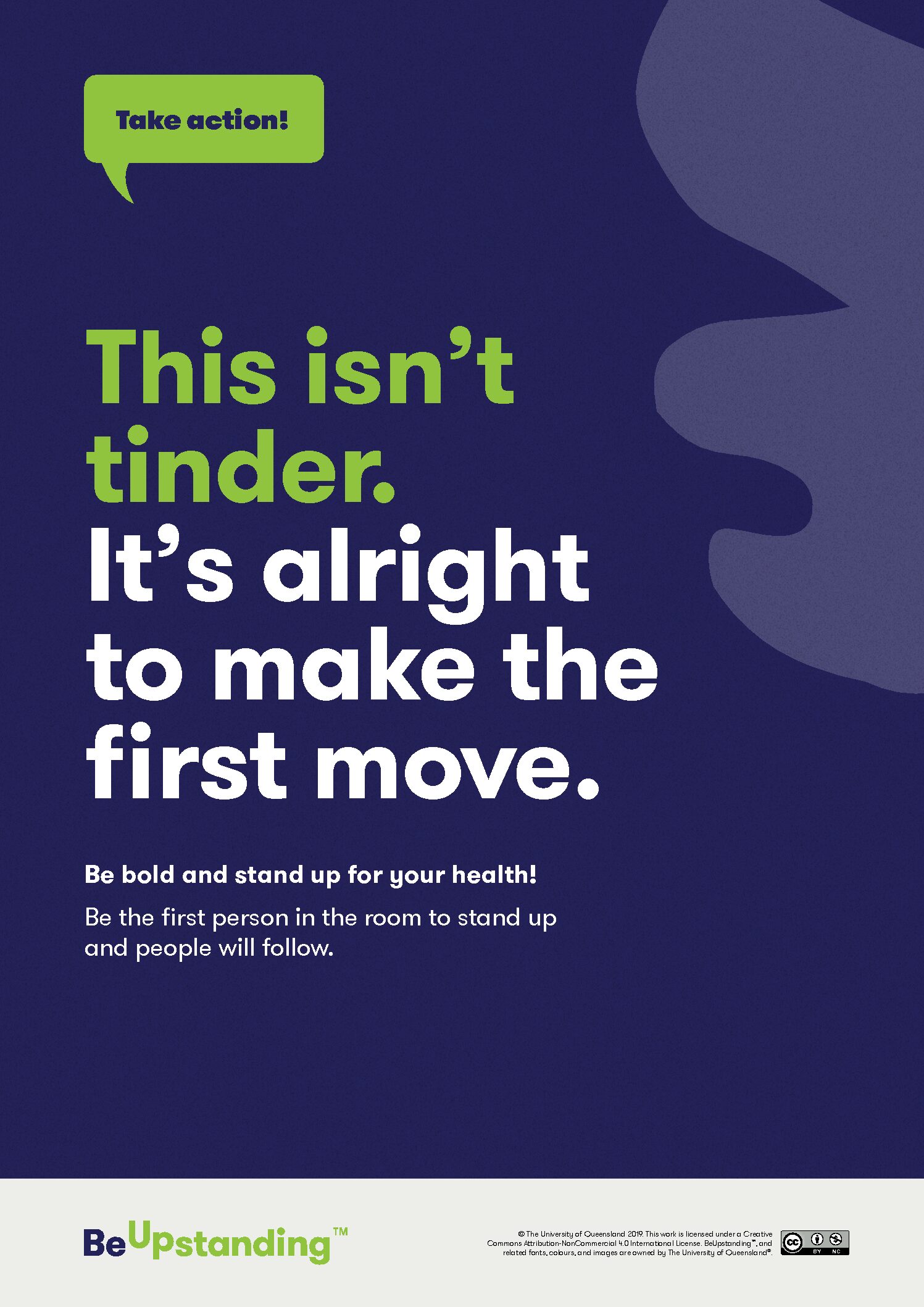Dr Ana Goode and A/Prof Genevieve Healy – the lead investigators on BeUpstanding – featured on the latest episode of the Physical Activity Researcher podcast – a Finnish initiative. They discuss the evidence that underpins BeUpstanding, the impact of COVID-19 on the program, and some simple strategies workplaces can do right away to start sitting less and moving more. Enjoy!
Tips from Champions for running a health and wellbeing program with a remote working team
With staff moving to working more from home as a result of COVID-19, this can present additional challenges to running health and well-being programs within a workplace. We have had many workplaces contact us to ask whether they can still implement BeUpstanding if staff are not located in the office or onsite and the good news is YES! BeUpstanding is designed to be able to be implemented with your staff no matter where they are working from and we have had many BeUpstanding champions who have successfully taken part in the program during the last few months whilst dealing with changes to staff working locations. Two of these champions share their experience below with running the program in their workplace before and during COVID-19 imposed changes, and provide insights and tips for how they were successfully able to engage staff in the program and encourage them to sit less and move more while “at” work. Our two Champions are Sabrina from CheckUp in Brisbane and Matthew from Breakthru in Sydney. How did COVID-19 affect your workplace? Sabrina: As a result of the COVID-19 pandemic, all CheckUP staff began working remotely from home throughout the course of the pandemic. In terms of…
![]()
Tips for running Health and Well-being programs with a remote working team
COVID-19 has upended business operations on a global scale and has forced many workplaces to rapidly transition to staff working remotely. However, with organisations adapting to change and staff experiencing the benefits of working from home, it may be the case that the shift towards telecommuting is here to stay. While the focus of organisations has been on ensuring the safety of their employees at this time, employee well-being is also becoming an area of greater significance. According to the Center for Disease Control (CDC), well-being is “the ability for individuals to address normal stresses, work productively, and realize their highest potential.” A wellness program should be designed to support the overall health and well-being of employees, while aiming to meet the specific needs of each individual employee. If you and your team are new to working from home, navigating this change on its own can be challenging. While your organisation may already have a wellness program or initiative in place, being able to adapt the program and make it relevant and engaging for staff working remotely can come with its own set of challenges. So how do you set you and your team up for success when it comes…
![]()
Developing a workplace culture when working remotely
During the recent COVID-19 outbreak, the Australian government had implemented social isolation in an effort to flatten the curve. Many office-based employees were encouraged to work from home in order to minimize the risk of individual’s exposure to COVID-19 through face to face contact. While working from home is reasonably practicable with the current available technology, this is often associated with a shift in workplace culture. Critical to maintaining a successful workplace culture is ensuring that there is knowledge sharing among employees. What is a knowledge-sharing culture? A knowledge-sharing culture is a set of understandings that focus on disseminating existing knowledge among team members and bringing new knowledge from the external environment. It is a set of unwritten guidelines that promotes sharing knowledge, experiences, and insights that are critical for accomplishing team missions. The key elements in knowledge sharing are not only the hardware and software, but also the ability and willingness of team members to actively participate in the knowledge sharing process. Why it is important: Shared understanding is a collective way of ensuring organisation relevant knowledge, and can influence the ability of teams to cooperate and perform well. The internet enables knowledge exchange in ways such as online group…
Staying motivated during a pandemic – a personal reflection
This personal piece was written by Jade Lim – a 4th year psychology student at UQ as part of her placement with the BeUpstanding team As we are all practicing social distancing rules, the majority of us are working from home. While doing university remotely, I felt like I have been stuck in a continuous loop where the concept of time and space were merely a distant dream. Okay, maybe my situation during this pandemic isn’t that dramatic, but honestly I have been so unmotivated to do anything and I am sure many students feel the same way. With the transition of classes from being offline to strictly online, I find it even harder to keep up with the tutorials and lectures than when I had to go on campus. The lack of face-to-face communication and accountability allowed procrastination to occur easily. Alas, being at home calls for distractions or the endless amount of ways you can preoccupy yourself besides actually doing something productive. The fridge, TV and bed all seem to call out my name whenever an assignment deadline is closing in. Besides that, being extremely reliant on technology and the internet has made me prone to having strained…
BeUpstanding study protocol published
Many of our work teams who have signed up for BeUpstanding are taking part in a national evaluation of the program. This evaluation is funded by the National Health and Medical Research Council of Australia (NHMRC) in partnership with our fantastic policy and practice partners. We have now published the protocol of this evaluation, and the free article is available online here. The key questions we are asking in the evaluation is: who is taking part in the program, how are the champions delivering the program, does the program work (and for whom does it not work), and how much does it cost. We are still recruiting for the trial and we are looking for desk teams from across Australia to sign up now. Importantly – you can run BeUpstanding even if your team is working from home, or has a mix of home and office. Indeed, BeUpstanding might be the perfect program to help your team stay connected while also supporting their health and wellbeing.
3 Tips from a Health Coach to Staying Active and Healthy when Working From Home
One of the biggest problems from working at home can be inactivity. There’s no walking to get a cup of coffee, visiting a nearby colleague, taking the stairs to the bathroom or those incidental types of activity that come from being in a workplace with people and areas spread out. Everything is within easy reach at home. Couple that with a busy workload and this can mean sitting for as long as possible until the task is done. Suddenly hours have gone by and we’re still sitting hunched over the desk. Remaining in one posture for hours at a time can affect the muscles in your back, neck, hip flexors, hamstrings and calves. Excessive sitting can affect your metabolism, increase blood pressure, blood sugar and cholesterol – and that’s just the tip of the iceberg! Staying active when working from home may seem easy. Without the daily commute and perhaps having more flexibility in your working hours, surely being at home affords you more time to spend on exercise? Whilst this may be true in theory, we may quickly fall into routines that do not prioritise healthy activity and the boundaries between work and personal life become blurred. The best…
Some quick ideas for your team to BeUpstanding when working remotely
One of the core principals of BeUpstanding is to build a supportive team culture that supports more movement, more often. But, how do you do that when members of your team are working from home or offsite? At team BeUpstanding we are working on a bunch of new resources to help support you and your team to sit less and move more – no matter where you are working from. While you wait for them, here are some quick suggestions on how you can BeUpstanding as a team while working remotely: Stand up and stretch during teleconferences: have this part of your remote etiquette that you support movement during meetings! Build in team reminders or prompts to stand and move through shared calendars and project management software Set team strength goals where everyone’s light resistance exercises (like calf raises, wall push ups) contribute to the daily team goal Send email reminders to take regular movement breaks like filling up your water glass
Keep it moving – fact sheets from Baker Heart & Diabetes Institute now available
One of the Academic partners on BeUpstanding – Baker Heart & Diabetes Institute – has put together some fantastic resources and fact sheets to help people keep it moving during the pandemic. Below is a snip from their healthy adults fact sheet. They also have fact sheets for people living with heart disease, people living with diabetes, people living with cancer, and older adults. This is just the start of a series of blogs and resources we will be providing to you through our BeUpstanding blog as we adjust to these extra-ordinary times. Stay safe, stay well, be kind – and, if you can – BeUpstanding.
Stand Up & Stand Out for All the Right Reasons
Making the first move to engage in standing behaviours and to promote a standing work environment can be intimidating as your team is challenging social norms ingrained over a lifetime of seated environments. That is why week 3 of our BeUpstanding program focuses on raising awareness and challenging these social norms. While biologically speaking the human body was made to be up-and-moving, for centuries, people have spent long hours of their days working while seated – from weavers, to fletchers, to the clergy. Even though work and work spaces have evolved since then due to cultural, technological and social factors, some normative behaviours, such as prolonged work sitting, have prevailed. Social norms are the rules that dictate how a person should act in a given group. They develop over time and become hardened to the point of being subconscious. That’s why engaging in prolonged sitting at work has always felt natural for most people. But social norms are not set in stone. They can – and should – change as we become more conscious about the issues they entail. Breaking social norms can be hard and making the first move to do so can be frightening. It can be difficult…


